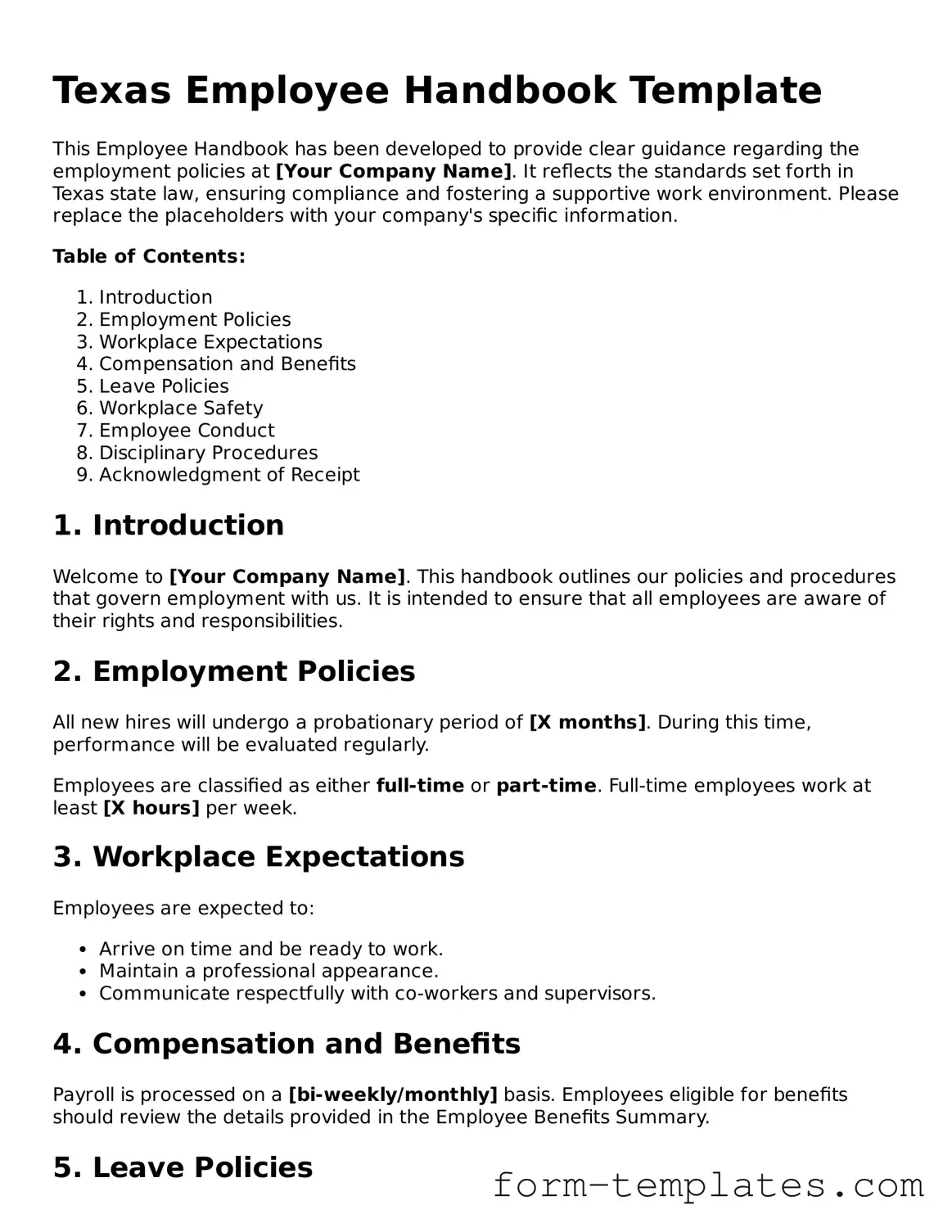Texas Employee Handbook Template
This Employee Handbook has been developed to provide clear guidance regarding the employment policies at [Your Company Name]. It reflects the standards set forth in Texas state law, ensuring compliance and fostering a supportive work environment. Please replace the placeholders with your company's specific information.
Table of Contents:
- Introduction
- Employment Policies
- Workplace Expectations
- Compensation and Benefits
- Leave Policies
- Workplace Safety
- Employee Conduct
- Disciplinary Procedures
- Acknowledgment of Receipt
1. Introduction
Welcome to [Your Company Name]. This handbook outlines our policies and procedures that govern employment with us. It is intended to ensure that all employees are aware of their rights and responsibilities.
2. Employment Policies
All new hires will undergo a probationary period of [X months]. During this time, performance will be evaluated regularly.
Employees are classified as either full-time or part-time. Full-time employees work at least [X hours] per week.
3. Workplace Expectations
Employees are expected to:
- Arrive on time and be ready to work.
- Maintain a professional appearance.
- Communicate respectfully with co-workers and supervisors.
4. Compensation and Benefits
Payroll is processed on a [bi-weekly/monthly] basis. Employees eligible for benefits should review the details provided in the Employee Benefits Summary.
5. Leave Policies
Employees are entitled to various types of leave, including:
- Sick leave
- Vacation leave
- Family and Medical Leave Act (FMLA) leave
6. Workplace Safety
The safety of our employees is paramount. All employees must adhere to safety regulations and report any hazards to their supervisor.
7. Employee Conduct
Employees are expected to maintain a high standard of conduct, which includes:
- No harassment or discrimination of any kind.
- Adherence to confidentiality policies.
- Compliance with all company rules and guidelines.
8. Disciplinary Procedures
Violations of company policy may result in disciplinary action, which could include:
- Verbal warnings
- Written warnings
- Termination
9. Acknowledgment of Receipt
Please sign and return the acknowledgment form provided at the end of this handbook to confirm that you have read and understood its contents.
